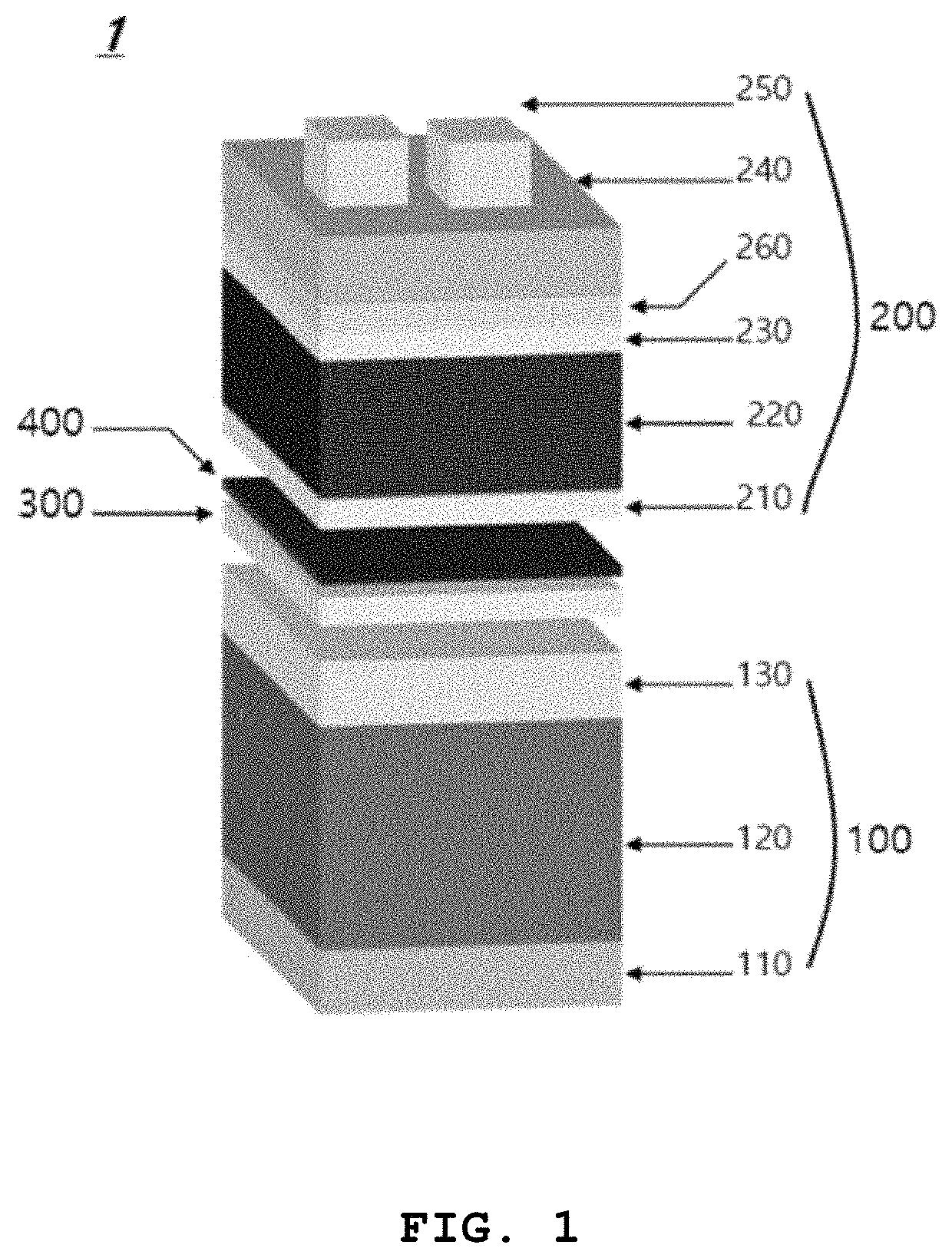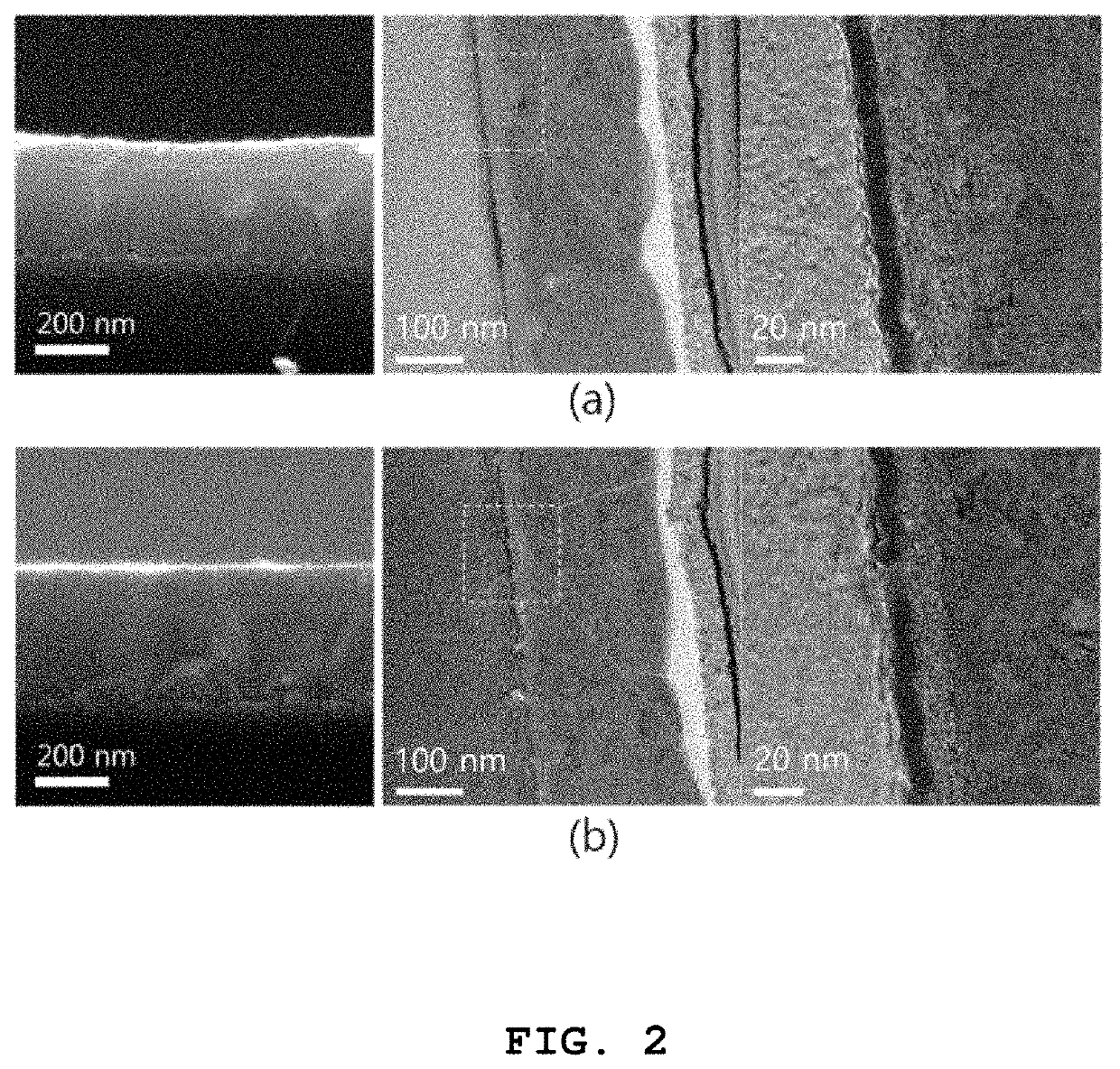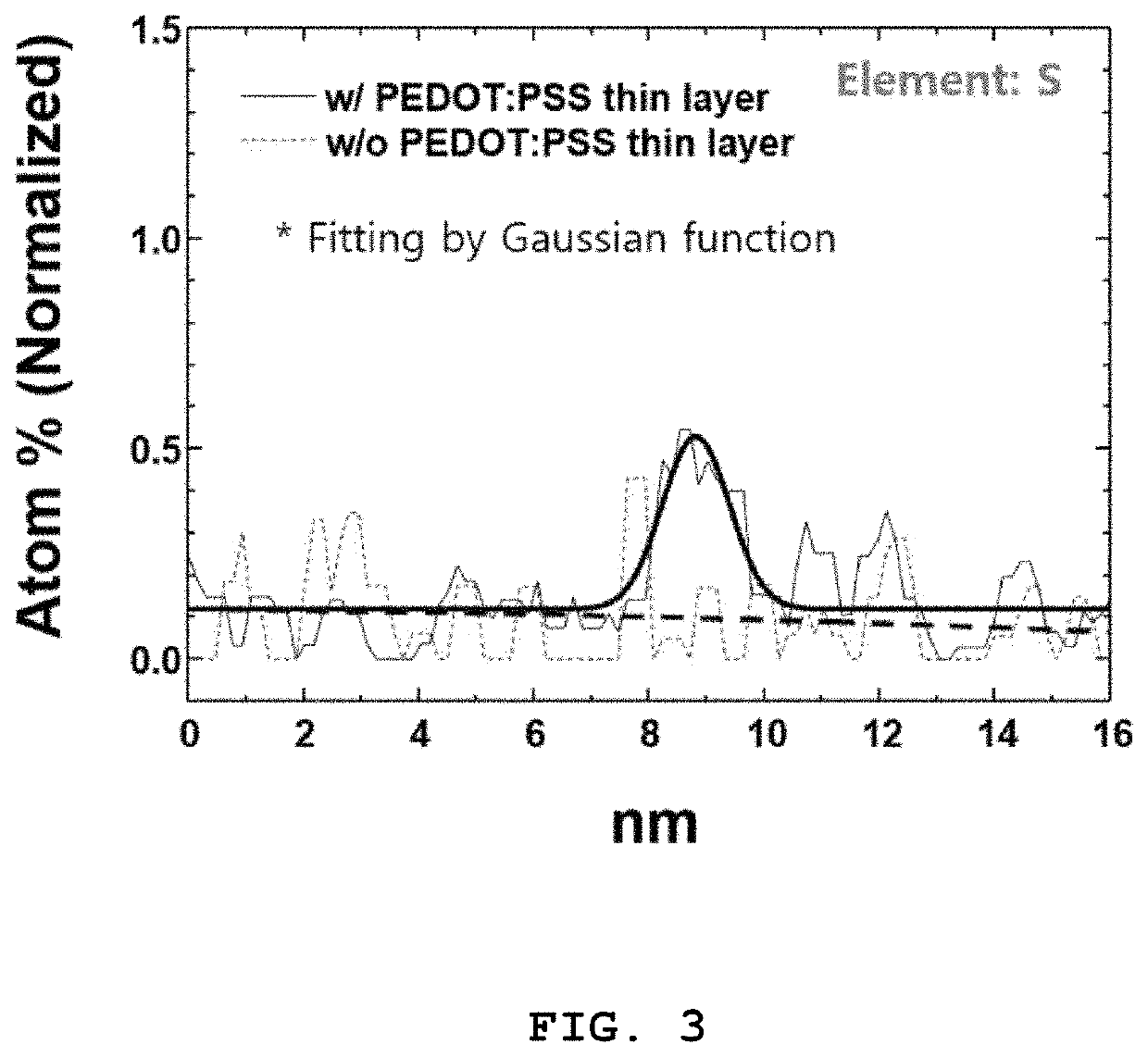Monolithic solar cell
a solar cell and monolithic technology, applied in the field of monolithic solar cells, can solve the problems of high manufacturing cost, limited theoretical photoelectric conversion efficiency (hereinafter referred to efficiency) of a single-junction solar cell to a maximum of about 33%, and the use of v compound-based tandem solar cells in extremely limited fields, so as to improve photoelectric conversion efficiency, improve charge transfer and recombination characteristics, and prevent optical loss at the interface during the manufactur
- Summary
- Abstract
- Description
- Claims
- Application Information
AI Technical Summary
Benefits of technology
Problems solved by technology
Method used
Image
Examples
experimental example
[0057]To manufacture monolithic solar cells including an interfacial layer (organic sacrificial layer) according to various embodiments of the present invention, a first solar cell, which was a silicon solar cell type, was prepared, an ITO-type tunnel junction layer was formed on an n-type emitter of the first solar cell, a PEDOT:PSS interfacial layer (or organic sacrificial layer) was formed on the ITO-type tunnel junction layer, and a second solar cell, which was a perovskite solar cell type, was laminated on the PEDOT:PSS interfacial layer.
[0058]Here, the PEDOT:PSS interfacial layer was manufactured by diluting PEDOT:PSS (Clevios™ P VP AI 4083), manufactured by Heraeus, with methanol, and then forming a PEDOT:PSS thin-film by spin-coating, followed by heat-treatment at 150° C. for 20 minutes.
[0059]A second solar cell, which is a perovskite solar cell type, was manufactured by sequentially laminating a p-type hole-selective film, a perovskite, an n-type electron-selective film, a ...
PUM
| Property | Measurement | Unit |
|---|---|---|
| band gap | aaaaa | aaaaa |
| band gap | aaaaa | aaaaa |
| photoelectric conversion efficiency | aaaaa | aaaaa |
Abstract
Description
Claims
Application Information
 Login to View More
Login to View More - R&D
- Intellectual Property
- Life Sciences
- Materials
- Tech Scout
- Unparalleled Data Quality
- Higher Quality Content
- 60% Fewer Hallucinations
Browse by: Latest US Patents, China's latest patents, Technical Efficacy Thesaurus, Application Domain, Technology Topic, Popular Technical Reports.
© 2025 PatSnap. All rights reserved.Legal|Privacy policy|Modern Slavery Act Transparency Statement|Sitemap|About US| Contact US: help@patsnap.com



